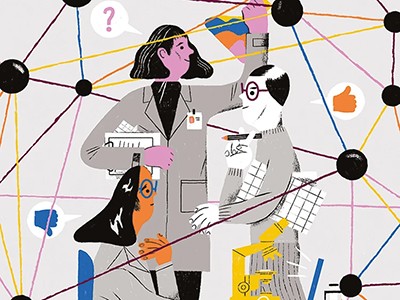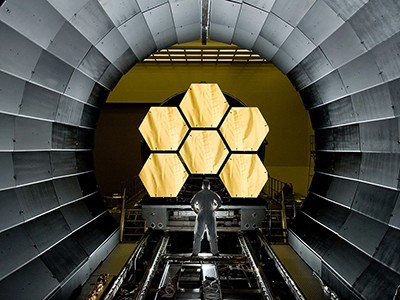Profound learning for protein plan
Twenty years prior, David Dough puncher at the University of Washington in Seattle and his partners accomplished a milestone accomplishment. they utilized computational devices to plan a completely new protein without any preparation. ‘Top7’ collapsed as anticipated, however it was inactive. It carried out no significant organic roles. Today, once more protein configuration has developed into a useful instrument for creating specially made compounds and different proteins. “It’s colossally enabling,” says Neil Ruler, a natural chemist at the University of Washington who teams up with Cook’s group to plan protein-based immunizations and vehicles for drug conveyance. “Things that were inconceivable 18 months prior — presently you get it done.”
A lot of that progress boils down to progressively monstrous informational indexes that connect protein succession to structure. Yet, refined methods of profound learning, a type of man-made consciousness (simulated intelligence), have likewise been fundamental.
‘Grouping based’ methodologies utilize the huge language models (LLMs) that power apparatuses such as the chatbot ChatGPT (see ‘ChatGPT? Perhaps one year from now’). By treating protein arrangements like archives involving polypeptide ‘words’. These calculations can observe the examples that underlie the structural playbook of genuine proteins. “They truly become familiar with the secret language structure,” says Noelia Ferruz. A protein natural chemist at the Sub-atomic Science Organization of Barcelona, Spain. In 2022, her group fostered a calculation called ProtGPT2 that reliably thinks of manufactured proteins that overlap steadily when created in the laboratory1. One more apparatus co-created by Ferruz, called ZymCTRL, draws on succession and utilitarian information to plan individuals from normally happening catalyst families2.
Deepfake location
The blast of openly accessible generative computer based intelligence calculations has simplified it to blend persuading, however completely fake pictures, sound and video. The outcomes can offer entertaining interruptions, however with various continuous international struggles and a US official political race not too far off, potential open doors for weaponized media control are overflowing.
Siwei Lyu, a PC researcher at the University at Bison in New York, says he’s seen various simulated intelligence created ‘deepfake’ pictures and sound connected with the Israel-Hamas struggle, for example. This is the very most recent round in a high-stakes mental contest where artificial intelligence clients produce misleading substance and Lyu and different media-legal sciences experts work to recognize and block it.

AI and science: what 1,600 researchers think
One arrangement is for generative-simulated intelligence engineers to implant stowed away signals in the models’ result, creating watermarks of computer based intelligence produced content. Different procedures center around the actual substance. A few controlled recordings, for example, supplant the facial elements of one well known individual with those of another. And new calculations can perceive curios at the limits of the subbed highlights, says Lyu.
The unmistakable folds of an individual’s external ear can likewise uncover befuddles between a face and a head, while abnormalities in the teeth can uncover altered lip-sync recordings in which an individual’s mouth was carefully controlled to offer something that the subject didn’t say. Man-made intelligence created photographs likewise present a prickly test — and a moving objective. In 2019, Luisa Verdoliva.
A media-legal sciences expert at University Federico II of Naples, Italy, assisted with creating FaceForensics++, a device for spotting faces controlled by a few broadly utilized programming packages6. Be that as it may, picture legal methods are subject-and programming explicit, and speculation is a test.”You can’t have one single inescapable identifier — it’s irrefutably testing,” she says.
And afterward there’s the test of execution. The US Safeguard Progressed Exploration Ventures Office’s Semantic Criminology (SemaFor) program has fostered a helpful tool compartment for deepfake examination, however, as detailed in Nature (see Nature 621, 676-679; 2023) significant web-based entertainment destinations are not regularly utilizing it. Widening the admittance to such instruments could assist with powering take-up, and to this end Lyu’s group has fostered the DeepFake-O-Meter7, a unified public store of calculations that can investigate video content from various points to track down deepfake content. Such assets will be useful, however almost certainly, the fight against simulated intelligence produced falsehood will persevere for quite a long time into the future.
Enormous section DNA inclusion
In late 2023, US and UK controllers supported the very first CRISPR-based quality altering treatment for sickle-cell illness and bonding subordinate β-thalassaemia — a significant success for genome altering as a clinical device.
CRISPR and its subsidiaries utilize a short programmable RNA to coordinate a DNA-slicing chemical such as Cas9 to a particular genomic site. They are regularly utilized in the lab to cripple damaged qualities and present little succession changes. The exact and programmable addition of bigger DNA arrangements traversing huge number of nucleotides is troublesome, yet arising arrangements could permit researchers to supplant vital sections of deficient qualities or supplement completely useful quality groupings. Le Cong, a sub-atomic geneticist at Stanford University in California and his partners are investigating single-abandoned toughening proteins (SSAPs) — infection determined particles that intercede DNA recombination. When joined with a CRISPR-Cas framework wherein the DNA-cutting capability of Cas9 has been impaired, these SSAPs permit unequivocally designated inclusion of as much as 2 kilobases of DNA into the human genome.

Seven technologies to watch in 2023
Different methods exploit a CRISPR-based strategy called prime altering to present short ‘landing cushion’ successions that specifically select proteins that thusly can definitively join huge DNA parts into the genome. In 2022, for example, genome engineers Omar Abudayyeh and Jonathan Gootenberg at the Massachusetts Establishment of Innovation.
Cambridge and their partners initial portrayed programmable expansion through site-explicit focusing on components (Glue), a strategy that can unequivocally embed as much as 36 kilobases of DNA8. Glue is particularly encouraging for ex vivo alteration of refined, patient-inferred cells, says Cong, and the basic prime-altering innovation is as of now on target for clinical investigations. Be that as it may, for in vivo change of human cells.
SSAP could offer a more minimized arrangement: the bulkier Glue hardware requires three separate viral vectors for conveyance, which could sabotage altering effectiveness comparative with the two-part SSAP framework. All things considered, even somewhat wasteful quality substitution techniques could be adequate to moderate the impacts of numerous hereditary sicknesses.
What’s more, such methods are not only pertinent to human wellbeing. Scientists drove by Caixia Gao at the Chinese Foundation of Sciences in Beijing created PrimeRoot, a technique that utilizations prime altering to present explicit objective locales that proteins can use to embed as much as 20 kilobases of DNA in both rice and maize9. Gao feels that the strategy could be comprehensively valuable for blessing crops with sickness and microorganism opposition, proceeding with a flood of development in CRISPR-based plant genome designing. “I accept that this innovation can be applied in any plant species,” she says.
Mind PC interfaces
Pat Bennett has more slow than normal discourse, and can some of the time utilize some unacceptable word. In any case, considering that engine neuron sickness, otherwise called amyotrophic parallel sclerosis, had recently left her unfit to communicate her thoughts verbally, that is a surprising accomplishment.
Bennett’s recuperation comes graciousness of a modern mind PC interface (BCI) gadget created by Stanford University neuroscientist Francis Willett and his partners at the US-based BrainGate consortium10. Willett and his partners embedded anodes in Bennett’s cerebrum to follow neuronal action and afterward prepared profound learning calculations to make an interpretation of those signs into discourse. Following half a month of preparing, Bennett had the option to say upwards of 62 words each moment from a jargon of 125,000 words — over two times the jargon of the typical English speaker. “It’s actually really amazing, the rates at which they’re conveying,” says bioengineer Jennifer Collinger, who creates BCI advancements at the University of Pittsburgh in Pennsylvania.

BrainGate’s preliminary is only one of a few examinations from the beyond couple of years showing. The way that BCI innovation can assist individuals with extreme neurological harm. To recapture lost abilities and accomplish more noteworthy freedom. A portion of that progress originates from the consistent collection of information about useful neuroanatomy. In the minds of people with different neurological circumstances. Says Leigh Hochberg, a nervous system specialist at Earthy colored University in Fortune, Rhode Island. Head of the BrainGate consortium. In any case, that information has been extraordinarily enhanced. He adds, by AI driven scientific methods that are uncovering how to all. The more likely spot terminals and unscramble the signs that they get.
Analysts are additionally applying man-made intelligence based language models to accelerate. The understanding of what patients are attempting to convey — basically. ‘Autocomplete’ for the mind. This was a center part of Willett’s review. As well as another11 from a group drove by neurosurgeon Edward Chang at .The University of California, San Francisco. In that work.
A BCI neuroprosthesis permitted a lady. Who couldn’t talk because of a stroke to impart at 78 words each moment — generally a portion of the typical speed of English. However in excess of multiple times quicker than the lady’s past discourse help gadget. The field is seeing improvement in different regions too. In 2021, Collinger and biomedical designer Robert Skinny at the University of Pittsburgh embedded cathodes into.
The engine and somatosensory cortex of a deadened in each of the four person appendages to give quick and exact command over a mechanical arm alongside material tangible feedback12. Likewise under way are free clinical examinations from BrainGate and scientists at UMC Utrecht in the Netherlands. As well as a preliminary from BCI firm Synchron in Brooklyn, New York, to test a framework that permits individuals who are deadened to control a PC — the main business supported preliminary of a BCI device.
As a concentrated consideration trained professional. Hochberg is anxious to convey these advances to his patients with the most serious handicaps. Yet, as BCI capacities develop. He sees potential to regard more-moderate mental hindrances as well as psychological well-being conditions, such as temperament issues. “Shut circle neuromodulation frameworks informed by mind PC points of interaction. Could be of enormous assistance to a many individuals,” he says.
Super goal
Stefan Heck, Eric Betzig and William Moerner were granted the 2014 Nobel Prize in Science for breaking the ‘diffraction furthest reaches’ that compelled the spatial goal of light microscopy. The subsequent degree of detail — in the request for many nanometres — opened an extensive variety of sub-atomic scale imaging tests. In any case, a few specialists long for better — and they are gaining quick headway. “We’re sincerely attempting to close the hole from super-goal microscopy to primary science procedures like cryo-electron microscopy.” Says Ralf Jungmann, a nanotechnology specialist at the Maximum Planck Establishment of Natural chemistry in Planegg, Germany, alluding to a technique that can recreate protein structures with nuclear scale goal.
Scientists drove by Damnation and his group at the Maximum Planck Foundation for Multidisciplinary Sciences in Göttingen made an underlying introduction to this domain in late 2022 with a strategy called MINSTED that can determine individual fluorescent names with 2.3-ångström accuracy — around one-fourth of a nanometre — utilizing a particular optical microscope13.
More current methods give tantamount goal utilizing traditional magnifying lens. Jungmann and his group, for example, portrayed a procedure in 2023 in which individual particles are named with unmistakable DNA strands14. These particles are then identified with color labeled integral DNA strands that tight spot to their comparing targets momentarily however over and over, making it conceivable to separate individual fluorescent ‘squinting’ focuses that would obscure into a solitary mass whenever imaged at the same time. This goal upgrade by successive imaging (RESI) approach could determine individual base matches on a DNA strand, exhibiting ångström-scale goal with a standard fluorescence magnifying lens.
The one-step nanoscale extension (ONE) microscopy strategy, created by a group drove by neuroscientists Ali Shaib and Silvio Rizzoli at University Clinical Center Göttingen, Germany, doesn’t exactly accomplish this degree of goal. Nonetheless, ONE microscopy offers an exceptional chance to straightforwardly picture fine underlying subtleties of individual proteins and multiprotein buildings, both in seclusion and in cells15.

ONE is a development microscopy-based approach that includes chemically coupling proteins in the example to a hydrogel lattice. Splitting the proteins up, and afterward permitting the hydrogel to extend 1,000-crease in volume. The sections extend uniformly every which way. Saving the protein structure and empowering clients to determine highlights isolated by. A couple of nanometres with a standard confocal magnifying instrument. “We took antibodies, put them in the gel, named them after extension, and were like. “Goodness — we see Y shapes!” says Rizzoli, implying the brand name condition of the proteins.
ONE microscopy could give experiences into conformationally dynamic biomolecules. Empower visual determination of protein-misfolding issues such as Parkinson’s sickness from blood tests. Says Rizzoli. Jungmann is also energetic about the potential for RESI to report revamping of individual proteins in illness or in light of medication medicines. It could try and be feasible to firmly zoom in more. “Perhaps it’s not the end for the spatial goal limits,”Jungmann says. “It could get to the next level.”
Cell chart books
In the event that you’re searching for a helpful bistro. Google Guides can track down neighboring choices and let you know how to arrive. There’s no identical for exploring the significantly more complicated scene of the human body. However continuous advancement from different cell-chart book drives — fueled by propels in single-cell examination and ‘spatial omics’ methods. Could before long convey the broad cell maps that scientists hunger for.
The biggest — and maybe the most aggressive — of these drives is the Human Cell Map book (HCA). The consortium was sent off in 2016 by cell scientist Sarah Teichmann at the Wellcome Sanger Foundation in Hinxton. UK, and Aviv Regev, presently head of exploration and early improvement at biotechnology firm Genentech in South San Francisco, California. It envelops exactly 3,000 researchers in almost 100 nations. Working with tissues from 10,000 givers. Yet, HCA is likewise essential for a more extensive biological system of crossing cell and sub-atomic map book endeavors. These incorporate the Human BioMolecular Chart book Program (HuBMAP). The Mind Exploration through Progressing Imaginative Neurotechnologies (Cerebrum) Drive Cell Statistics Organization (BICCN). Both supported by the US Public Establishments of Wellbeing. As well as the Allen Synapse Chart book, subsidized by the Allen Foundation in Seattle, Washington.
As per Michael Snyder, a genomicist at Stanford University and previous co-seat of the HuBMAP guiding board of trustees. These endeavors have been driven to some extent by the turn of events and fast commercialization of scientific instruments that.
Can disentangle sub-atomic items at the single-cell level. For instance, Snyder’s group regularly involves the Xenium stage from 10X Genomics in Pleasanton, California, for its spatial transcriptomics examinations. The stage makes it conceivable to overview. The declaration of about 400 qualities without a moment’s delay in 4 tissue tests consistently. Multiplexed immunizer based methods such as .
The PhenoCycler stage by Akoya Biosciences in Marlborough, Massachusetts, permit. The group to follow huge quantities of proteins with single-cell goal in a configuration that empowers 3D tissue reproduction. Other ‘multiomics’ methods permit researchers to profile numerous sub-atomic classes in a similar cell on the double. Including the statement of RNA, the design of chromatin and the dispersion of protein.
A cell atlas of the human lung describes different cell types and how they are regulated.Credit: Peng He
Last year saw many examinations displaying progress in the age of organ-explicit map books utilizing these strategies. In June, for instance, the HCA delivered a coordinated examination of 49 informational collections from the human lung16. “Having that extremely clear guide of the lung illuminates the progressions that occur in illnesses like lung fibrosis. Various growths, in any event, for Coronavirus,” says Teichmann. What’s more, in 2023, Nature delivered an article assortment (see go.nature.com/3vbznk7). Featuring progress from HuBMAP and Science created an assortment specifying crafted by the BICCN (see go.nature.com/3nsf4ys).
Extensive work remains — Teichmann gauges that it will be no less than five years before the HCA arrives at consummation. Be that as it may, the subsequent guides will be priceless when they show up. Teichmann, for instance, predicts utilizing map book information to direct tissue-and cell-explicit medication focusing. While Snyder is anxious to figure out how cell microenvironments educate. The gamble and etiology regarding complex problems such as disease and peevish gut condition. “Will we tackle that in 2024? I have to take a hard pass — it’s a long term issue,” Snyder says. “However, it’s a major driver for this entire field.”
Nanomaterials imprinted in 3D
Strange and intriguing things can occur at the nanometre scale. This can make materials-science expectations troublesome. However it likewise implies that nanoscale engineers can fabricate lightweight materials with particular attributes such as expanded strength. Custom-made cooperations with light or sound, and upgraded limit with regards to catalysis or energy stockpiling.
A few techniques exist for unequivocally creating such nanomaterials. The vast majority of which use lasers to prompt designed ‘photopolymerization’ of light-delicate materials. Throughout the course of recent years, researchers have gained significant ground in defeating. The limits that have hindered more extensive reception of these methods.
Researchers have crafted microscale metal structures using a hydrogel.Credit: Max Saccone/Greer Lab
One is speed. Sourabh Saha, a designer at the Georgia Foundation of Innovation in Atlanta. Says that the gathering of nanostructures utilizing photopolymerization is approximately three significant degrees quicker than other nanoscale 3D-printing methods. That may be sufficient for lab use, however it’s excessively delayed for huge scope creation or modern cycles. In 2019, Saha and mechanical designer Shih-Chi Chen at the Chinese University of Hong Kong. Their partners demonstrated the way that they could speed up polymerization by utilizing. A designed 2D light-sheet as opposed to a regular beat laser17. “That forms the rate by different times, and you can regardless stay aware of those 100-nanometre features,” says Saha. Ensuing work from specialists including Chen has distinguished different roads for quicker nanofabrication18.
Another test is that not all materials can be printed straightforwardly through photopolymerization — such as metals. In any case, Julia Greer, a materials researcher at the California Foundation of Innovation in Pasadena. Has fostered a shrewd workaround. In 2022, she and her partners portrayed a technique in which photopolymerized hydrogels act as a microscale layout. These are then implanted with metal salts and handled. In a manner that prompts the metal to expect the construction of the format while likewise shrinking19. Albeit the method was at first produced for microscale structures, Greer’s group has additionally involved this system for nanofabrication. The scientists are energetic about the possibility to create utilitarian nanostructures from rough, high-dissolving point metals and compounds.
The last boundary — financial aspects — could be the hardest to break. As per Saha, the beat laser-based frameworks utilized in numerous photopolymerization methods cost upwards of US$500,000. Yet, less expensive options are arising. For instance, physicist Martin Wegener and his associates at. The Karlsruhe Foundation of Innovation in Germany have investigated nonstop lasers that are less expensive. More reduced, and consume less power than standard beat lasers20. Furthermore, Greer has sent off a new business to popularize. A cycle for creating nanoarchitected metal sheets that could be reasonable for applications such. As cutting edge body reinforcement or super solid and effect safe external layers for airplane and different vehicles.



